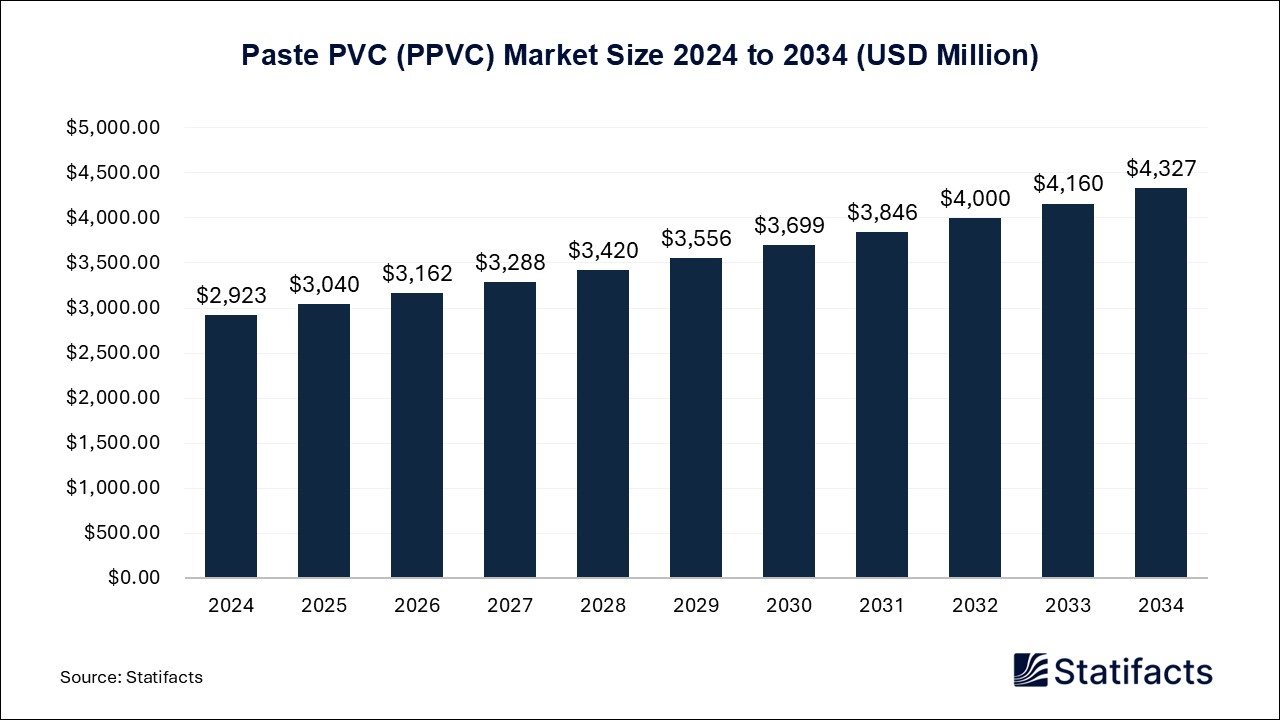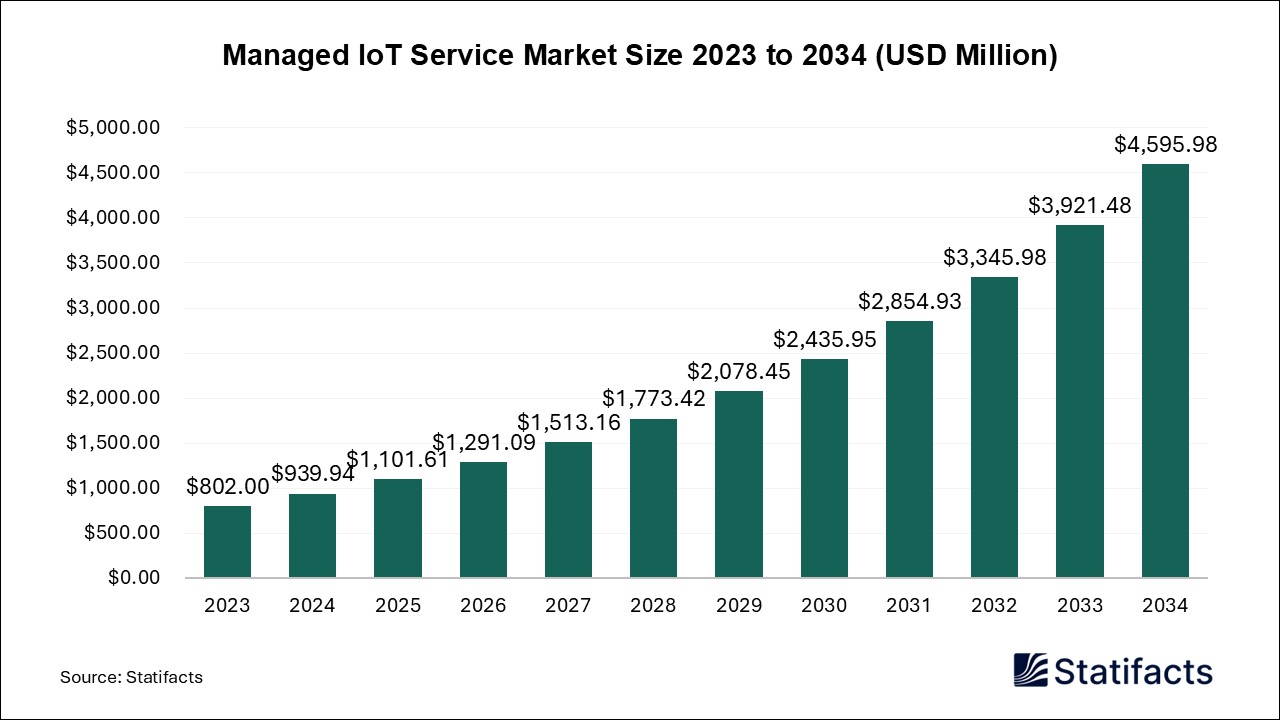Last Updated: 23 Jun 2025
Source: Statifacts
By clicking “Accept All Cookies” you agree to the storing of cookies on your device to enhance site navigation, analyze site usage, and assist in our marketing efforts.
Privacy PolicyThe global bioethanol market size was estimated at USD 86.5 billion in 2024 and is projected to be worth around USD 124.16 billion by 2034, growing at a CAGR of 3.68% from 2025 to 2034.
| Industry Worth | Details |
| Market Size in 2025 | USD 89.22 Billion |
| Market Size by 2034 | USD 124.16 Billion |
| Market Growth Rate from 2025 to 2034 | CAGR of 3.68% |
The global bioethanol industry involves the production, distribution, and application of bioethanol from renewable biomass and generation systems. It is biodegradable, produced from the fermentation of sugars existing in agricultural feedstock could be as sugarcane, corn, and crop residues. Hence, bioethanol serves as a clean-burning alternative to gasoline; it has a high octane rating and low greenhouse gas emissions. This market is a step toward searching for alternative sources of energy and is also an engine for reducing dependence on fossil fuels. Bioethanol also finds uses in power generation and industrial processes besides transportation purposes and demand. With the advancement of the processes associated with employing algae and waste biomass for bioethanol conversion, more yields can be achieved at a lower cost.
“We are excited about Verbio's expansion plans and their impact on our regional economy. As an industry leader in renewable natural gas production, Verbio will bring new life to the ethanol plant with cutting-edge green technology that will add to South Bend's clean energy portfolio.”
“In the future, the e-Bio Fuel Cell will become even more eco-friendly, with the possibility of using ethanol mixed with water, easier and safer to handle than other fuels – all this without needing to create a new infrastructure.”
Which Region Is Dominating the Bioethanol Market?
North America
North America dominated the market due to stringent environmental safeguards and a strong push for greener fuels for transport. The region has been seeing a spurt in demand for bioethanol as an alternative fuel substitute for gasoline, and with production technologies becoming better and better, the automotive sector has also been witnessing very good growth. Both the US and Canada have regulations for the implementation of bioethanol blends into vehicle fuels, hence granting impetus to demand within the region.
The decarbonization of transport in Canada has further augmented the consumption of biofuels. Technological advancements, including fermentation methods and genetically optimizing feedstock crops, have contributed to increasing efficiency in energy use and subsequently reducing the costs of production. The domestic bioethanol industries, especially second-generation ethanol from agricultural and forestry residues, are also being given precedence. The bioethanol market in Europe, on the other hand, continues its expansion on account of renewable fuels and concerns related to fossil fuel emissions.
The market is moderately fragmented with local players like Archer Daniels Midland, Valero Energy Corporation, Tereos, Raizen, POET LLC, Flint Hills Resources, The Andersons Inc., Pacific Ethanol, Green Plains, Sekab Biofuels & Chemicals AB, etc. wishing to take the time to edge their presence through investments, partnerships, acquisitions, and mergers. They also invest in product development and competitive pricing. These strategies will promote market growth and lucrative opportunities for market players
Raizen's annual revenue for the year ending March 31, 2024, was BRL 220,454.24 million, a decrease from the previous year's BRL 245,831.79 million.
Green Plains Inc. reported a trailing 12-month revenue of $2.46 billion as of March 31, 2025. This figure represents a decrease compared to the prior year.
The Andersons, Inc. (ANDE) is a diversified company primarily operating in agriculture. In 2024, their revenue was $11.26 billion.
Published by Shubham Desale
Last Updated: 23 Jun 2025
Source: Statifacts
Last Updated: 23 Jun 2025
Source: Statifacts
| Subsegment | 2024 | 2025 | 2026 | 2027 | 2028 | 2029 | 2030 | 2031 | 2032 | 2033 | 2034 |
|---|---|---|---|---|---|---|---|---|---|---|---|
| E5 (5% Ethanol, 95% Gasoline) | 9,319.80 | 9,568.90 | 9,831.10 | 10,110.10 | 10,405.80 | 10,725.40 | 11,068.50 | 11,438.80 | 11,841.70 | 12,279.70 | 12,758.00 |
| E10 (10% Ethanol, 90% Gasoline) | 44,239.70 | 45,772.90 | 47,391.10 | 49,113.70 | 50,942.90 | 52,916.50 | 55,035.20 | 57,321.20 | 59,805.30 | 62,504.50 | 65,450.60 |
| E15 (15% Ethanol, 85% Gasoline) | 20,012.40 | 20,655.60 | 21,333.90 | 22,055.80 | 22,821.90 | 23,648.90 | 24,536.50 | 25,494.20 | 26,535.20 | 27,666.40 | 28,901.10 |
| E85 (85% Ethanol, 15% Gasoline) | 8,331.20 | 8,543.70 | 8,767.10 | 9,004.70 | 9,256.40 | 9,528.50 | 9,820.40 | 10,135.50 | 10,478.30 | 10,851.00 | 11,257.90 |
| E100 (100% Ethanol, Flex-fuel vehicles) | 4,596.80 | 4,683.60 | 4,774.50 | 4,871.20 | 4,973.30 | 5,084.00 | 5,202.90 | 5,331.30 | 5,471.30 | 5,623.70 | 5,790.40 |
Last Updated: 23 Jun 2025
Source: Statifacts
| Subsegment | 2024 | 2025 | 2026 | 2027 | 2028 | 2029 | 2030 | 2031 | 2032 | 2033 | 2034 |
|---|---|---|---|---|---|---|---|---|---|---|---|
| E5 (5% Ethanol, 95% Gasoline) | 9,319.80 | 9,568.90 | 9,831.10 | 10,110.10 | 10,405.80 | 10,725.40 | 11,068.50 | 11,438.80 | 11,841.70 | 12,279.70 | 12758 |
| E10 (10% Ethanol, 90% Gasoline) | 44,239.70 | 45,772.90 | 47,391.10 | 49,113.70 | 50,942.90 | 52,916.50 | 55,035.20 | 57,321.20 | 59,805.30 | 62,504.50 | 65,450.60 |
| E15 (15% Ethanol, 85% Gasoline) | 20,012.40 | 20,655.60 | 21,333.90 | 22,055.80 | 22,821.90 | 23,648.90 | 24,536.50 | 25,494.20 | 26,535.20 | 27,666.40 | 28,901.10 |
| E85 (85% Ethanol, 15% Gasoline) | 8,331.20 | 8,543.70 | 8,767.10 | 9,004.70 | 9,256.40 | 9,528.50 | 9,820.40 | 10,135.50 | 10,478.30 | 10851 | 11,257.90 |
| E100 (100% Ethanol, Flex-fuel vehicles) | 4,596.80 | 4,683.60 | 4,774.50 | 4,871.20 | 4,973.30 | 5084 | 5,202.90 | 5,331.30 | 5,471.30 | 5,623.70 | 5,790.40 |
Key trends include a shift toward second-generation (cellulose-based) ethanol, AI-driven process optimization, rising use of E15–E70 blends, and stricter global clean fuel mandates.
Growth is anchored in decarbonization policies, rising fuel blending mandates, technological improvements in fermentation and biomass conversion, and cost advantages of starch- and cellulose-based ethanol. Additionally, increasing transportation fuel demand, geopolitical pressure to reduce fossil fuel imports, and strategic bio-refinery investments are propelling industry expansion. The CAGR of 3.68% underscores the market’s sustained potential.
With a projected value of USD 124.16 billion by 2034 and clear government support globally, the sector presents moderate-to-high investment attractiveness. Second-generation ethanol and AI-enabled bio-refinery automation offer scalable and capital-efficient growth opportunities. Companies investing in next-gen feedstocks and low-carbon production pathways are likely to outperform in the medium to long term.
AI and machine learning are revolutionizing feedstock optimization, predictive maintenance, process automation, and supply chain management. Simultaneously, innovations in microbial genetics, enzyme engineering, and algae-based ethanol production are enhancing yield efficiencies and lowering production costs. These disruptions are critical for future competitiveness and sustainability.
Global policies promoting low-carbon fuels are a cornerstone for bioethanol growth. North America benefits from Renewable Fuel Standards (RFS), while Europe enforces Renewable Energy Directives. India and Brazil are pushing ethanol-fueled vehicles and high blending targets. Regulatory certainty and incentives are essential in reducing investment risk and expanding production infrastructure.
The market is moderately fragmented, with key U.S.-based players such as Archer Daniels Midland, Valero, POET, and Green Plains dominating. In Brazil and Europe, companies like Raizen and Tereos are significant. Competition is intensifying around sustainable production practices, M&A activity, and technological integration. Companies leveraging AI and diversifying feedstocks are gaining a strategic edge.
North America, particularly the U.S., is the global leader in ethanol production and exports, supported by stringent emissions regulations and government subsidies. The region’s dominance is reinforced by advanced infrastructure, mature blending standards, and innovations in both first- and second-generation ethanol production technologies.
To get full access to our Market Insights, you need a Professional Account or a Business Suite.

You will receive an email from our Business Development Manager. Please be sure to check your SPAM/JUNK folder too.

You will receive an email from our Business Development Manager. Please be sure to check your SPAM/JUNK folder too.

Our customers work more efficiently and benefit from



